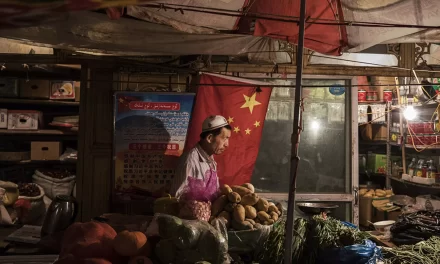The Second Age of Asia’s Tiger Cubs
 By Chng Boon Huei, President and CEO of Flexi Versa Group
By Chng Boon Huei, President and CEO of Flexi Versa Group
Thanks to rapid development through the 1960s to 1990s, Hong Kong, Japan, South Korea and Singapore were named as Asian Tigers. In 2030, it was suggested that 60% or more of the world’s economic growth will come from Asia. Five countries were named Asia Tiger Cubs not only because they mimicked the development, success and growth of their prosperous neighbors, they are also the fastest-growing in the region. These five Cubs are Indonesia, Thailand, Philippines, Malaysia and Vietnam.
So, as brands look to decouple with China and reduce supply chain dependance, which of these Tigers and Tiger Cubs seem most appropriate?
The economy of Malaysia is the third largest in Southeast Asia, in terms of GDP per capita and the 34th largest in the world according to the IMF. It has the largest GDP per capita of the so-called Tiger Cubs.
Labor productivity of Malaysia was measured at Int$55,360 per worker. Again the highest among the ‘Cubs’ and significantly higher than Thailand ($30,840), Indonesia ($23,890), The Philippines ($19,630) and Vietnam ($12,740). The Malaysian economy is the 25th most competitive country economy in the world, making it more competitive than France, Japan and Israel. And according to the Ease of Doing Business Index 2020, Malaysia is the 12th easiest country to do business in. Malaysia also wins on ESG risk, being shown to be the least risky nation in Asia on almost every count. Our very own Victor Wong wrote “5 Reasons to Manufacture Electronics in Malaysia” in EPSNews explaining many of the advantages that Malaysia offers.
The truth is that most of these nations have been successfully manufacturing for decades. A few one might consider to be newer players including Vietnam, which has a young but relatively inexperienced workforce but closest to China. Few have the consistency of Malaysia in terms of performance, economic and political stability, logistics, ancillary industries’ support, infrastructure, governance, proximity, sustainability and scalability.
Recently some brands have looked long and hard at economies like Vietnam, Myanmar and Laos as low cost options to China as costs there continue to rise. These countries may have large pools of low cost labor but they lack the pedigree of Malaysia and bring with them their own inherent risks. Pedigree is important. Malaysia is one of the most mature manufacturing markets in SE Asia and is literally a stone’s throw from one of the most important financial cities in the world, Singapore.
Ticking all the boxes
We think that Malaysia checks all the boxes that a brand or OEM should be reviewing when they look to reduce their dependence on China, be that through an exit from China or moving to a more robust “China Plus One” strategy moving forward.
Choosing a suitable manufacturing partner is a complex business and choosing the right manufacturing region is no less challenging. Partners need to have the right size if they are to be able to meet the needs of the brand, but they should not be so large that the brand gets lost within the business. An OEM spending a few million dollars a year on manufacturing would be unlikely to be best supported by one of the top tier EMS companies whose sales are counted in tens of Billions of dollars. Conversely you don’t want to be so much of your manufacturing partner’s business that they are at risk when your volumes reduce, as they do from time to time.
You also need your partner, and their location, to offer the ability to scale. This means access to more labor, more materials, more machinery, perhaps even more land when it is needed. As a brand that is ambitious in its growth plans, you will want a partner that reflects that ambition.
What makes Malaysia and the manufacturers that operate here unique among the Tigers and Tiger Cubs is that they have remained competitive while many have priced themselves out of the market. Malaysia has a mature manufacturing and skill base with a great infrastructure, which you won’t find in the newer nations to join the high tech manufacturing industry. Malaysia has a good record on human rights, along with strong commitment and progress on ESG, unlike some countries in the group whose political winds have changed recently.
All in all, Malaysia may not be the biggest or the cheapest, but it has an amazing manufacturing pedigree, it’s been a consistent performer for many decades and it provides a solid, low risk, high value choice for a manufacturing geography. Past track records may not guarantee future performances but it surely mitigates the risks of failing, particularly considering its matured skill base and manufacturing experiences, supply chain and more importantly, Intellectual Property Rights protection and its ESG initiatives as well.











